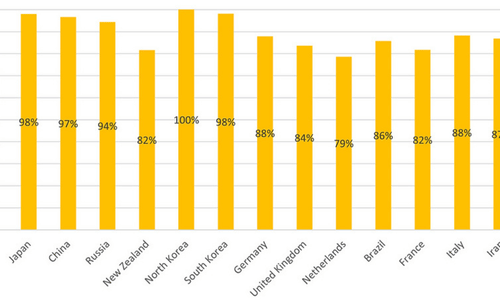Updated:

In today’s rapidly evolving digital landscape, cybersecurity has become a top priority for businesses of all sizes and industries. As cyber threats continue to grow in complexity and sophistication, it is more important than ever for organizations to ensure that their networks, applications, and systems are secure from potential attacks. One effective way to achieve this is through penetration testing – a proactive approach to uncovering vulnerabilities before they can be exploited by malicious actors.
In this comprehensive guide, we will demystify the world of penetration testing and provide you with the essential information you need to understand its importance, process, and methodologies. Our goal is to make this complex topic approachable and easy to grasp for both technical and non-technical audiences alike. We aim to create an engaging and informative resource that showcases our passion for cybersecurity and commitment to providing top-notch penetration testing services.
So, whether you’re a business owner seeking to strengthen your organization’s security posture or an IT professional looking to expand your knowledge on this crucial aspect of cybersecurity, this guide is for you. Let’s dive in and explore the fascinating world of penetration testing.
What is Penetration Testing?
Penetration testing, also known as pen testing or ethical hacking, is a simulated cyber attack performed by security professionals on an organization’s network, applications, or systems. The primary objective of penetration testing is to identify vulnerabilities, weaknesses, and potential entry points that a malicious attacker could exploit. By simulating real-world attack scenarios, penetration testing provides valuable insights into the effectiveness of an organization’s security measures and helps prioritize remediation efforts.
Unlike a vulnerability assessment, which typically involves automated scanning tools to identify potential weaknesses, penetration testing goes a step further by actively attempting to exploit discovered vulnerabilities. This hands-on approach helps organizations better understand the potential impact of an actual cyber attack, allowing them to address security risks more effectively.
In essence, penetration testing is a proactive approach to cybersecurity that helps businesses stay one step ahead of cybercriminals. By uncovering and fixing vulnerabilities before they can be exploited, organizations can significantly reduce the risk of data breaches, service disruptions, and other costly security incidents. Moreover, regular penetration testing can also help businesses demonstrate their commitment to security and compliance, which can be particularly important when dealing with clients, partners, and regulatory bodies.
Types of Penetration Tests
Penetration tests can be tailored to target different aspects of an organization’s IT infrastructure, depending on the specific security concerns and objectives. Although there are a large number of possible types, here are some common penetration tests:
- Network Penetration Testing: This type of test focuses on identifying vulnerabilities within the organization’s internal and external networks. It targets network devices, servers, firewalls, and other network infrastructure components. The goal is to evaluate the security of the network architecture and identify weaknesses that could be exploited to gain unauthorized access or disrupt services.
- Web Application Penetration Testing: Web applications are a common target for cybercriminals due to their direct access to sensitive data and backend systems. This type of test assesses the security of web applications by identifying vulnerabilities such as SQL injection, cross-site scripting (XSS), and insecure authentication mechanisms. The primary aim is to prevent unauthorized access to user data and ensure the integrity of the application.
- Mobile App Penetration Testing: As mobile devices become increasingly prevalent, ensuring the security of mobile applications is essential. Mobile app penetration testing focuses on identifying vulnerabilities within iOS, Android, and other mobile platforms. It includes testing for insecure data storage, weak encryption, and flaws in the app’s communication with backend servers.
- Wireless Network Penetration Testing: Wireless networks can be vulnerable to various security threats, making it critical to assess their security. This type of test targets Wi-Fi networks, Bluetooth connections, and other wireless technologies, aiming to uncover weaknesses in encryption, authentication, and access control mechanisms.
- Social Engineering: Social engineering attacks exploit human psychology rather than technical vulnerabilities, often relying on manipulation or deception to gain unauthorized access to sensitive information. This type of test assesses an organization’s susceptibility to social engineering tactics, such as phishing, pretexting, and physical security breaches, with the goal of improving employee awareness and reducing the risk of falling victim to such attacks.
Each of these penetration testing types serves a unique purpose, addressing specific security concerns within an organization. In most cases, a combination of these tests is necessary to obtain a comprehensive understanding of an organization’s security posture and ensure robust protection against various cyber threats.
Penetration Testing Methodologies
A well-structured methodology is crucial for the success of a penetration test. Following a standardized process helps ensure consistency, thoroughness, and accuracy in identifying vulnerabilities and evaluating security risks. There are several widely-accepted penetration testing methodologies that provide a solid framework for conducting tests. Some popular methodologies include:
- OWASP (Open Web Application Security Project): OWASP is an open-source community that provides guidelines and best practices for securing web applications. The OWASP Testing Guide offers a comprehensive methodology for conducting web application penetration tests, covering various aspects such as information gathering, configuration management, and input validation. This methodology is widely used and respected within the cybersecurity community.
- PTES (Penetration Testing Execution Standard): PTES is a comprehensive framework that covers all phases of a penetration test, from initial planning and reconnaissance to reporting and remediation. It provides detailed guidance on the techniques and tools to be used at each stage of the testing process, ensuring a thorough and systematic approach to identifying vulnerabilities and assessing security risks.
- NIST SP 800-115 (National Institute of Standards and Technology Special Publication): NIST SP 800-115 is a technical guide for conducting penetration tests developed by the U.S. government. It provides a standardized process for planning, executing, and reporting penetration tests, along with recommendations for selecting appropriate testing tools and techniques.
- OSSTMM (Open Source Security Testing Methodology Manual): OSSTMM is a peer-reviewed methodology that focuses on operational security, including the testing of physical, digital, and human security aspects. It provides a systematic and measurable approach to penetration testing, offering guidelines for assessing security controls and identifying potential risks.
Regardless of the specific methodology chosen, the key is to follow a structured and well-defined process that ensures all aspects of the target environment are thoroughly evaluated. This not only helps identify vulnerabilities more effectively but also provides a clear and consistent basis for reporting findings and prioritizing remediation efforts. Although these methodologies are a good guide, penetration testers tend to have a bespoke, complex methodology built on top of these. By building on a proven methodology, penetration testers can deliver more reliable and valuable insights to help organizations improve their overall security posture.
The Penetration Testing Process
While the specifics may vary depending on the chosen methodology and the scope of the test, most penetration tests follow a similar process consisting of several phases. Here’s a general outline of the penetration testing process:
- Planning and Scoping: This initial phase involves defining the objectives, scope, and boundaries of the test, as well as the rules of engagement. Both the penetration testers and the organization should have a clear understanding of the systems, networks, or applications to be tested, the specific testing techniques to be used, and any limitations or restrictions to be observed.
- Reconnaissance: During this phase, the testers gather information about the target environment. This can include gathering publicly available information (passive reconnaissance) or actively probing systems and networks for vulnerabilities (active reconnaissance). The goal is to collect as much data as possible to better understand the target and inform subsequent testing activities.
- Vulnerability Assessment: The testers analyze the collected data to identify potential vulnerabilities and weaknesses in the target environment. This may involve using automated scanning tools or manual techniques to uncover security flaws that could be exploited by an attacker.
- Exploitation: In this phase, the testers attempt to exploit the identified vulnerabilities to gain unauthorized access, escalate privileges, or otherwise compromise the target environment. This helps to evaluate the potential impact of an actual cyber attack and provides a basis for prioritizing remediation efforts.
- Post-Exploitation: Once the testers have successfully exploited a vulnerability, they may explore the target environment further to identify additional vulnerabilities or determine the extent of the compromise. This can help assess the potential damage an attacker could cause and identify any weaknesses in the organization’s incident response capabilities.
- Reporting and Remediation: The final phase involves documenting the findings of the penetration test, including details of the vulnerabilities discovered, the exploitation techniques used, and any evidence of compromise. This report should provide clear and actionable recommendations for addressing the identified security risks. The organization can then use this information to prioritize and implement remediation efforts, ultimately improving its overall security posture.
By following a structured and systematic process, penetration testers can ensure that they thoroughly assess the target environment and provide valuable insights to help organizations address their security vulnerabilities and risks. Regular penetration testing is a critical component of a robust cybersecurity strategy, helping organizations stay one step ahead of potential threats and maintain a strong security posture.
Red Team vs. Blue Team Assessments
In the context of cybersecurity, Red Team and Blue Team assessments are distinct but complementary approaches designed to improve an organization’s security posture. Both types of assessments play crucial roles in identifying and mitigating vulnerabilities, but they differ in their objectives, methodologies, and focus areas.
Red Team Assessment: A Red Team assessment simulates a realistic cyber attack on an organization’s network, applications, or systems, with the primary goal of testing its defenses and identifying vulnerabilities. The Red Team consists of highly skilled ethical hackers who emulate the tactics, techniques, and procedures of real-world threat actors. They work independently, without any insider knowledge of the target environment, to test the effectiveness of security controls, processes, and incident response capabilities.
Key aspects of a Red Team assessment include:
- Real-world attack simulation: The Red Team mimics the behavior of actual cybercriminals to reveal vulnerabilities that may be overlooked during routine security assessments.
- Creative and adaptive: Red Team members think like attackers, employing a wide range of techniques, and adapting their strategies as they encounter obstacles.
- Comprehensive evaluation: Red Team assessments provide a holistic view of an organization’s security posture, assessing not just technical defenses but also human factors and physical security.
Blue Team Assessment: The Blue Team’s primary objective is to defend the organization’s IT infrastructure against potential threats, including those identified during Red Team assessments. The Blue Team consists of security professionals responsible for managing, monitoring, and maintaining the organization’s security controls, policies, and procedures. They work to detect, respond to, and mitigate cyber threats, continuously improving their defensive strategies based on the latest threat intelligence and attack scenarios.
Key aspects of a Blue Team assessment include:
- Proactive defense: The Blue Team focuses on identifying potential security weaknesses and implementing robust defensive measures to protect the organization’s assets.
- Continuous improvement: Blue Team members analyze the results of Red Team assessments, as well as real-world incidents, to refine and enhance their security practices.
- Monitoring and incident response: The Blue Team is responsible for detecting and responding to security events, ensuring that any breaches are contained and remediated quickly and effectively.
In many cases, organizations conduct exercises that pit the Red Team against the Blue Team in a simulated cyber conflict.
These exercises, often referred to as “Purple Team” assessments, provide valuable opportunities for both teams to learn from each other and improve their respective skills, ultimately resulting in a stronger overall security posture for the organization.
By leveraging the unique strengths and perspectives of both Red and Blue Team assessments, organizations can more effectively identify and address potential vulnerabilities and threats, ensuring a robust and resilient cybersecurity strategy.
Compliance and Penetration Testing
In addition to helping organizations identify and address security vulnerabilities, penetration testing plays a critical role in demonstrating compliance with various regulatory requirements and industry standards. Many regulations and frameworks mandate regular security assessments, including penetration tests, to ensure that organizations are taking appropriate measures to protect sensitive data and maintain a strong security posture. Some prominent examples include:
- PCI DSS (Payment Card Industry Data Security Standard): PCI DSS is a set of security standards designed to ensure that all organizations that process, store, or transmit credit card information maintain a secure environment. Regular penetration testing is required for both internal and external networks to validate the effectiveness of security controls and identify potential weaknesses that could be exploited by attackers.
- HIPAA (Health Insurance Portability and Accountability Act): HIPAA sets forth privacy and security rules for protecting sensitive healthcare information. While HIPAA does not explicitly require penetration testing, it does mandate regular risk assessments to identify potential vulnerabilities in electronic protected health information (ePHI) systems. Penetration testing is a widely accepted and recommended practice to fulfill this requirement and ensure the security of ePHI.
- GDPR (General Data Protection Regulation): GDPR is a comprehensive data protection regulation that applies to organizations operating within the European Union or processing the personal data of EU residents. Under GDPR, organizations are required to implement appropriate technical and organizational measures to ensure the security of personal data. Regular penetration testing is considered a best practice for demonstrating compliance with this requirement, as it helps organizations identify and address vulnerabilities that could lead to data breaches.
- ISO/IEC 27001: ISO/IEC 27001 is an international standard for information security management systems (ISMS). While not explicitly requiring penetration testing, the standard emphasizes the need for organizations to perform regular security assessments, including vulnerability assessments and penetration tests, to ensure the ongoing effectiveness of their ISMS.
Conducting regular penetration tests not only helps organizations maintain compliance with these and other regulatory requirements but also demonstrates their commitment to security and risk management to clients, partners, and other stakeholders. By proactively identifying and addressing vulnerabilities, organizations can reduce the likelihood of costly security incidents and potential regulatory penalties, while also enhancing their reputation and competitive advantage in the marketplace.
Choosing a Penetration Testing Provider
Selecting the right penetration testing provider is crucial for ensuring the success of your security assessment and, ultimately, improving your organization’s security posture. There are several factors to consider when evaluating potential providers, including:
- Expertise and Experience: Look for a provider with strong expertise in penetration testing. Assess their experience with various types of tests (network, web application, mobile, etc.) and industries. Ask for case studies, references, or testimonials to better understand the provider’s capabilities and the quality of their work.
- Technical Skills: Ensure the provider’s team members have the necessary technical skills to perform penetration tests effectively. Especially when working with specialized technology, don’t be afraid to ask hard questions.
- Methodology and Reporting: Evaluate the provider’s approach to penetration testing, including the methodologies they follow, the tools they use, and the level of detail in their reporting. A comprehensive and well-documented methodology is essential for a thorough and effective assessment, while clear and actionable reporting is critical for prioritizing and implementing remediation efforts.
- Communication and Collaboration: Effective communication and collaboration between the penetration testing provider and your organization are crucial for the success of the test. Look for a provider that is willing to work closely with your team, provide regular updates throughout the process, and offer guidance and support during the remediation phase.
- Compliance and Legal Considerations: Ensure the provider is familiar with the regulatory requirements and industry standards relevant to your organization. The provider should be able to demonstrate how their penetration testing services can help your organization meet its compliance obligations and maintain a strong security posture.
- Pricing and Value: While cost should not be the sole determining factor, it is essential to find a provider that offers competitive pricing and delivers value for your investment. Assess the provider’s pricing structure, the scope of services included, and any additional support they offer, such as remediation guidance or retesting.
By considering these factors and conducting thorough research, you can find a penetration testing provider that meets your organization’s unique needs and helps you achieve your security goals. Remember that regular penetration testing is a critical component of a robust cybersecurity strategy, and partnering with the right provider can significantly enhance your organization’s overall security posture.
Conclusion
Penetration testing is an essential part of maintaining a strong security posture in today’s rapidly evolving cyber threat landscape. By proactively identifying and addressing vulnerabilities, organizations can reduce the risk of costly security breaches and maintain compliance with regulatory requirements and industry standards. A successful penetration test involves following a structured methodology, targeting various aspects of an organization’s IT infrastructure, and working closely with a skilled provider.
At Stratus Security, it is our mission to help organizations protect their valuable assets and ensure the confidentiality, integrity, and availability of their information systems. We are committed to providing top-notch penetration testing services, tailored to our client’s unique needs and objectives, while delivering clear and actionable insights to support their ongoing security efforts.
By investing in regular penetration testing and partnering with a trusted provider, organizations can stay one step ahead of potential threats, safeguard their critical assets, and maintain a resilient and robust cybersecurity strategy in an increasingly complex digital world. If you’re ready to strengthen your organization’s cybersecurity posture, feel free to get in touch with our team for more information on our comprehensive penetration testing services.


